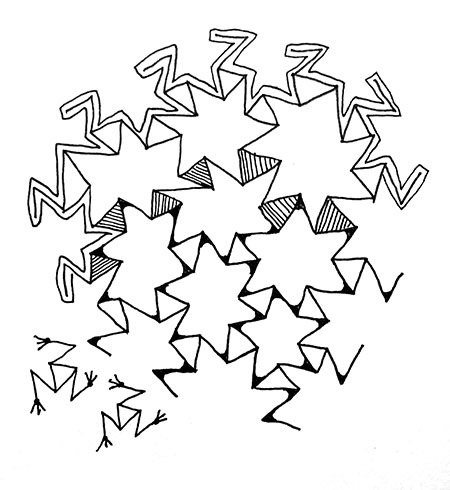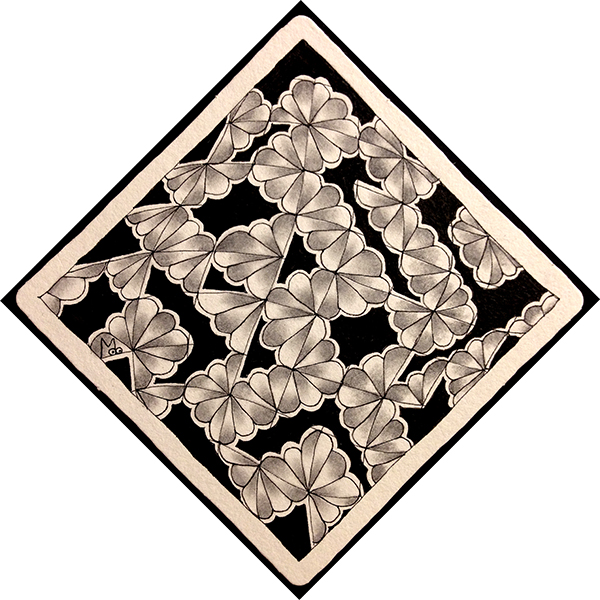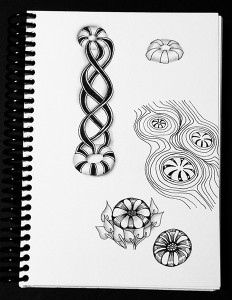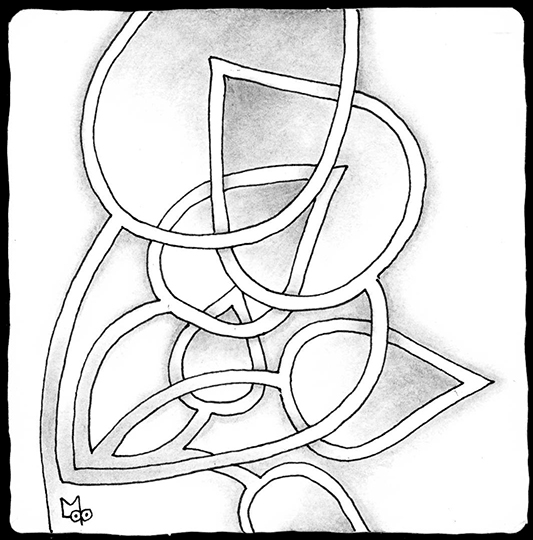
Something interesting happened to me recently. I was busy drawing when an image suddenly popped into my head. It had nothing to do with what I was drawing but it demanded to be put down on paper. This is what it was…

It is a simple motif that is made up of three Zs. This little guy gave me such happy feelings that I did a quick step-out and called it ThreeZee. I didn’t have time to play with ThreeZee right then so I posted it to a CZT page to ask if anyone had seen anything like it or had used the name before.

It was then that a wonderful thing happened. ThreeZee inspired several CZTs to do some explorations and use ThreeZee in some very interesting ways.
First, Marguerite Samama used it as a string on a 3Z tile (how appropriate!)

Of course, I had to give that a try too!

That made me want to see what kind of meta pattern would be created if I drew it as a fragment in a hexagonal grid. The result was very quilt-like and I had fun adding the tangle Maryhill (by Betsy Wilson, CZT) which gave it real dimension.

Then Jane MacKugler posted a wonderful, colorful, freeform version of ThreeZee. Adding to the basic motif resulted in a meta pattern of stars.

Then Diana Schreur, CZT posted another version of this freeform style. She used ThreeZee with her tangle, Connesses, which, similar to ThreeZee, is made up of three Ss. (Step Outs for Conesses can be found on TanglePatterns.com )

Of course these two tiles inspired me to give this free form style a try too. Also, this question arose, “What do you call a group of ThreeZee? a Cozy of course ; )”


TIP: I did find that it is easier for me to keep track of things when grouping ThreeZee, if I draw the second Z of the motif all the way around to form the star first, and then go back and add the third Z (see illustration below). Also, be mindful that you are drawing a Z and NOT a mirror image.

OR use another form at the intersections of ThreeZee, such as the orbs in this example, and create an even more random grouping.

I also played with putting ThreeZee in a circle Reticulum using a curvy Z and some auras. Here is a work in progress drawing so you can see the progression.

Or ThreeZee as a border.

And finally, connecting the “legs” of a ThreeZee motif for an Origami Threezee.

I just love the way this tangle introduced itself to me and created an environment that inspired others to help develop its potential. Kind of Crowd Sourcing for tangle development or as Rohini Singh, CZT put it recently, I may be ThreeZee’s Mother but Marguerite, Jane, and Diana are the midwives that helped give it birth.
I hope you give ThreeZee a try. As you can see it’s very versatile and I think you will find it will make you happy too. What can be better than that?
Blessings,
Lynn


























